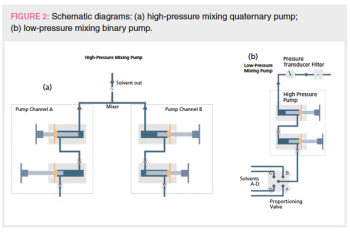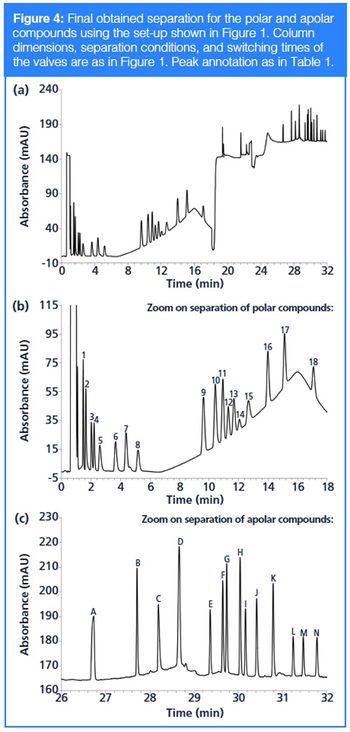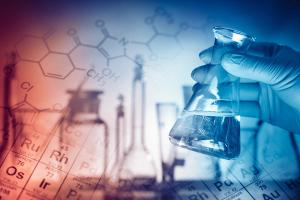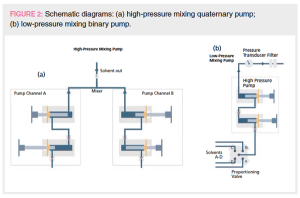
When esterification occurs in your LC mobile phase, knowing how baseline quality, retention, and selectivity are affected will help you mitigate the effects.

When esterification occurs in your LC mobile phase, knowing how baseline quality, retention, and selectivity are affected will help you mitigate the effects.

This instalment is the first of a series of four white papers on high performance liquid chromatography (HPLC) modules (pump, autosampler, UV detector, and chromatography data system) to be published in 2019. This instalment provides an overview for analytical-scale HPLC pumps, including their requirements, modern designs, operating principles, trends, and best practices for trouble-free operation.

Gaining a solid understanding of how HPLC instrumentation works will help you achieve success in the analytical laboratory. This four-part series is here to guide you, starting with pumps.

There is increasing demand to analyze samples with a wide range of polarities, in fields such as environmental analysis and proteomics.

Appropriate analytical methods are required to evaluate the presence, metabolism, degradation, and removal of specific compounds in complex mixtures. There is an increasing demand to analyze samples with a wide range of polarities in a variety of applications, including environmental analysis, biomarker discovery, and proteomics. Multiple analyses on complementary columns are often needed to cover the separation of all compounds with a large difference in polarity. This article describes a generic method involving an ultrahigh‑pressure liquid chromatography (UHPLC) system equipped with two external switching valves to connect hydrophilic interaction liquid chromatography (HILIC) and reversed-phase LC columns in series for the sequential analysis of polar and apolar compounds.

Published: September 1st 2022 | Updated:

Published: June 7th 2016 | Updated:

Published: February 1st 2017 | Updated:

Published: June 1st 2019 | Updated:

Published: August 1st 2019 | Updated: